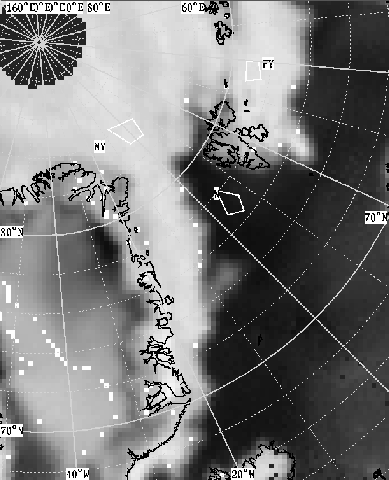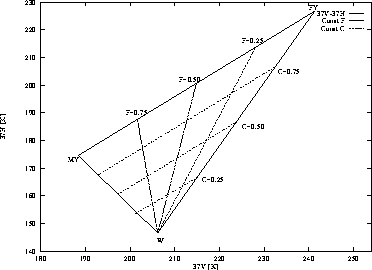
Figure 2 The tie-point areas
The algorithms from the previous sections requires tie-points in the channels 37V, 37H, 19V and 19H. Three areas containing basicly open water (W), multi-year ice (MY) and first-year ice (FY) have been chosen as shown in Figure 2.
By going through daily processed ice maps it has been observed, that the ice conditions in the three areas hardly change in a period of January and February 1993. This suggests, that the ice conditions are fairly constant, and the tie-points can be chosen to the mean antenna temperature in the two-month period. Hereby it is assumed, that only one ice type is present in each area, which can't be verified by the SSM/I data.
In the period of January and February 1993, the mean brightness temperature in the three areas have have been calculated in each of the four used channels. The obtained results are shown in Table 1.

Table 1 Tie-Points for the Arctic area in winter 1993 (in K)
These data can by used to draw a so-called retrieval triangle as shown in Figure 3.

Figure 3 Retrieval triangle in the 37V-37H channels
The figure shows the three components W, MY and FY, lines of constant ice concentration and lines of constant multi-year ice fraction.
Tim Flintholm Fink<tff@emi.dtu.dk>